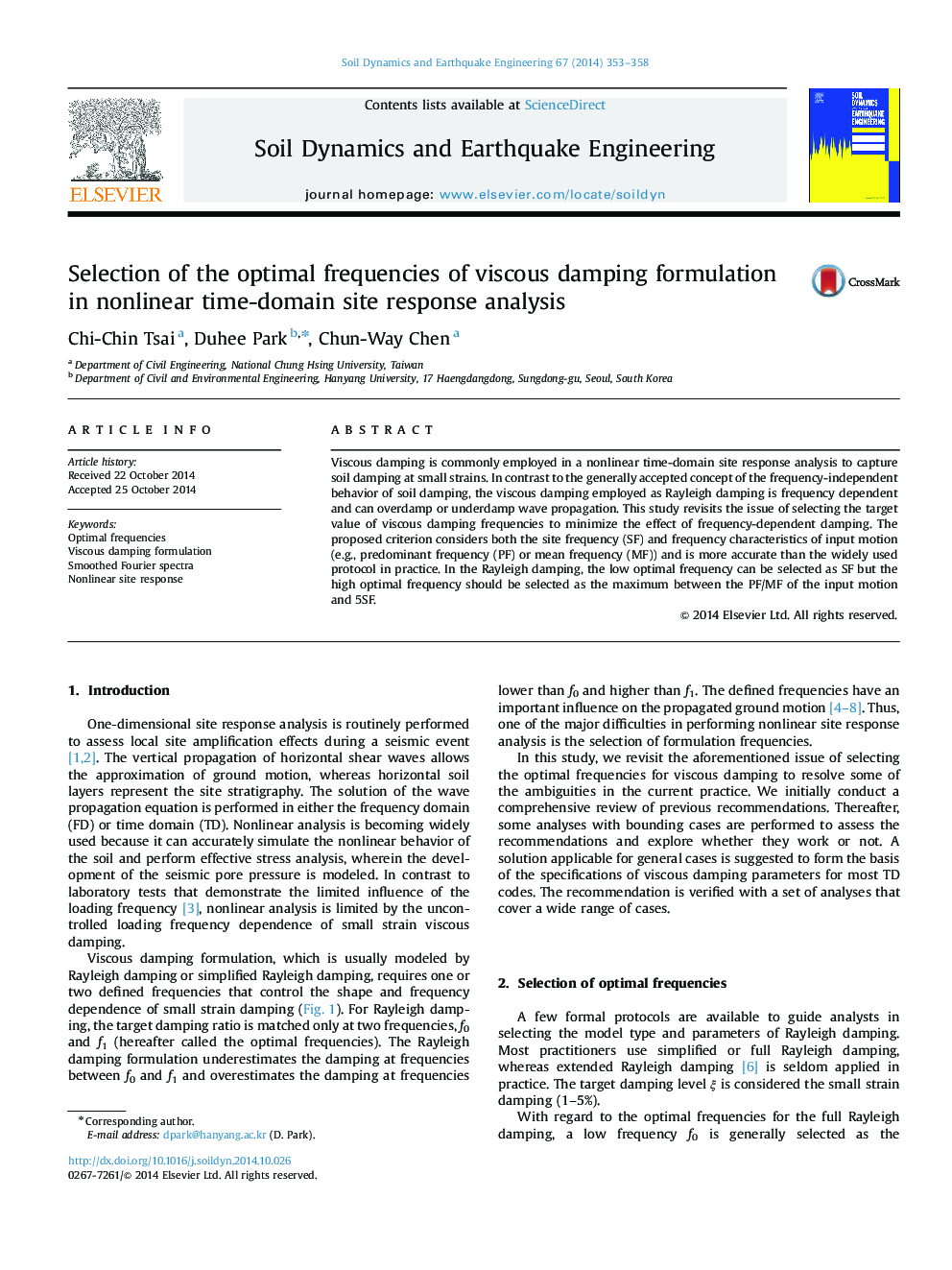| Article ID | Journal | Published Year | Pages | File Type |
|---|---|---|---|---|
| 6772477 | Soil Dynamics and Earthquake Engineering | 2014 | 6 Pages |
Abstract
Viscous damping is commonly employed in a nonlinear time-domain site response analysis to capture soil damping at small strains. In contrast to the generally accepted concept of the frequency-independent behavior of soil damping, the viscous damping employed as Rayleigh damping is frequency dependent and can overdamp or underdamp wave propagation. This study revisits the issue of selecting the target value of viscous damping frequencies to minimize the effect of frequency-dependent damping. The proposed criterion considers both the site frequency (SF) and frequency characteristics of input motion (e.g., predominant frequency (PF) or mean frequency (MF)) and is more accurate than the widely used protocol in practice. In the Rayleigh damping, the low optimal frequency can be selected as SF but the high optimal frequency should be selected as the maximum between the PF/MF of the input motion and 5SF.
Related Topics
Physical Sciences and Engineering
Earth and Planetary Sciences
Geotechnical Engineering and Engineering Geology
Authors
Chi-Chin Tsai, Duhee Park, Chun-Way Chen,
